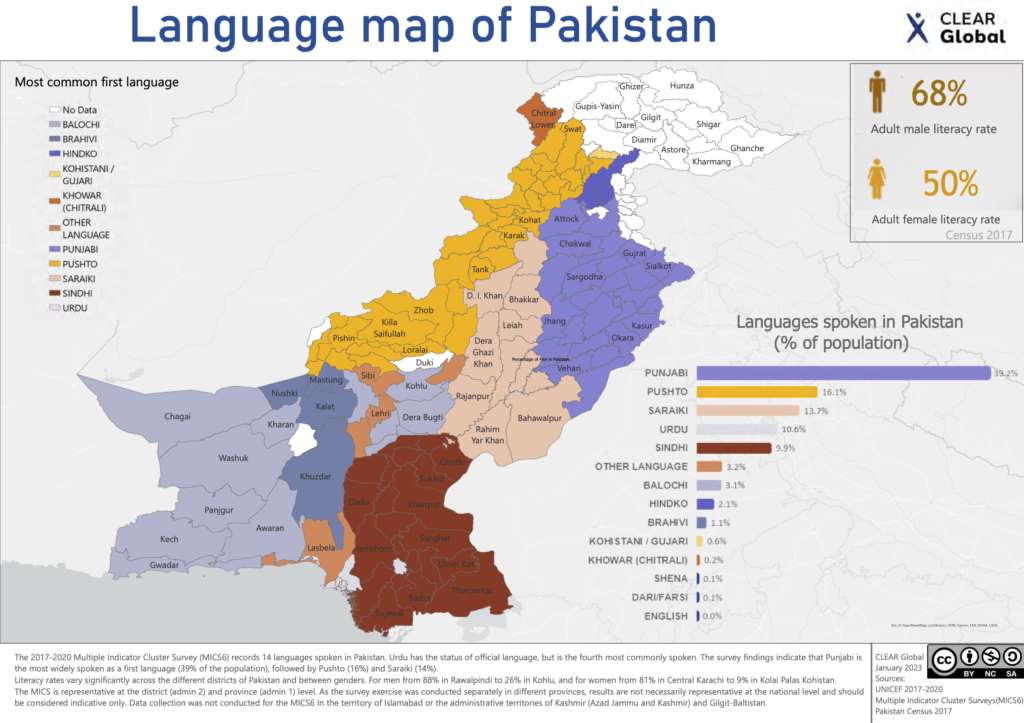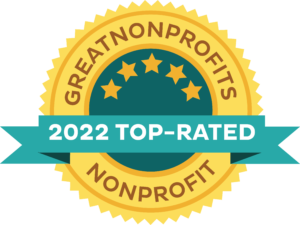The 2017 - 2020 Multiple Indicator Cluster Survey (MICS6) records 14 languages spoken in Pakistan. Urdu has the status of official language but is the fourth most commonly spoken. The survey findings indicate that Punjabi is the most widely spoken as first language (39% of the population), followed by Pushto (16%) and Saraiki (14%).
According to the 2017 Pakistan Census conducted and supervised by the Pakistan Bureau of Statistics, the overall literacy rate in Pakistan in 2017 was 59%. Literacy rates are markedly lower for women (50%) than men (68%).
Literacy rates vary significantly across the different districts of Pakistan and between genders. For men from 88% in Rawalpindi to 26% in Kohlu, and for women from 81% in Central Karachi to 9% in Kolai Palas Kohistan.
The Multiple Indicator Cluster Survey (MICS6) was conducted by UNICEF. It heard from over 110,000 respondents and is representative at the district (admin 2) and province (admin 1) level. As the survey exercise was conducted separately in different provinces, results are not necessarily representative at the national level and should be considered indicative only. Data collection was not conducted for the MICS6 In the territory of Islamabad or the administrative territories of Kashmir (Azad Jammu and Kashmir) and Gilgit-Baltistan.
Explore the data by district here.
Curated datasets
Available on Humanitarian Data Exchange (HDX)
Language data allows humanitarian organizations to better understand the languages people speak and understand, leading to better programming and accountability. We’re working with University College London’s Centre for Translation Studies and others to make language data more easily accessible and usable.
For more information, read about the project on our blog or contact info@translatorswithoutborders.org.

